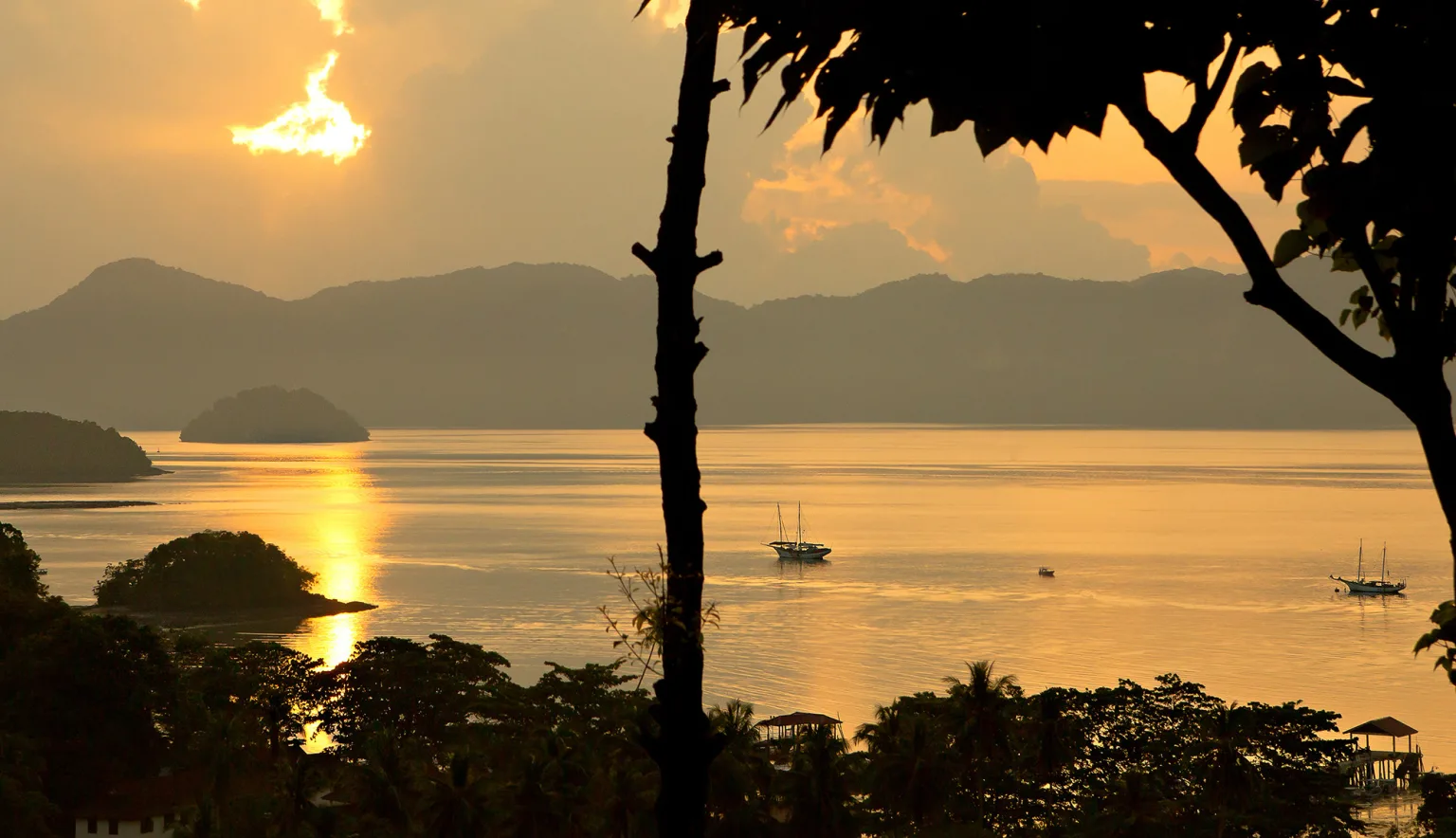A TROPICAL SOJOURN
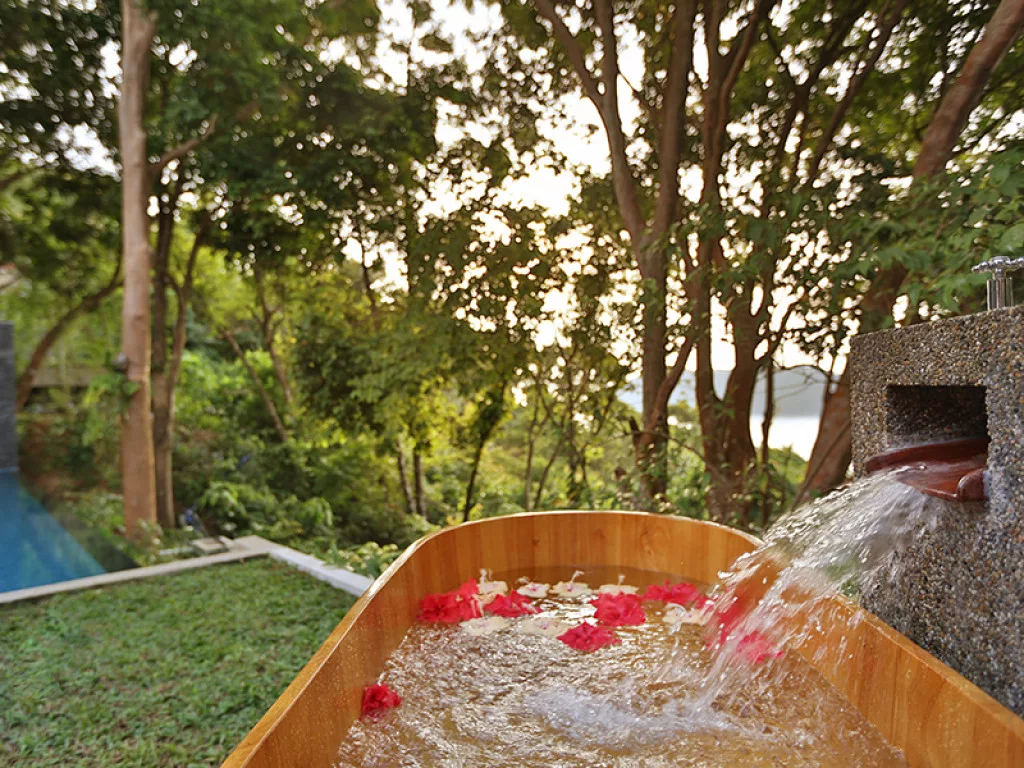
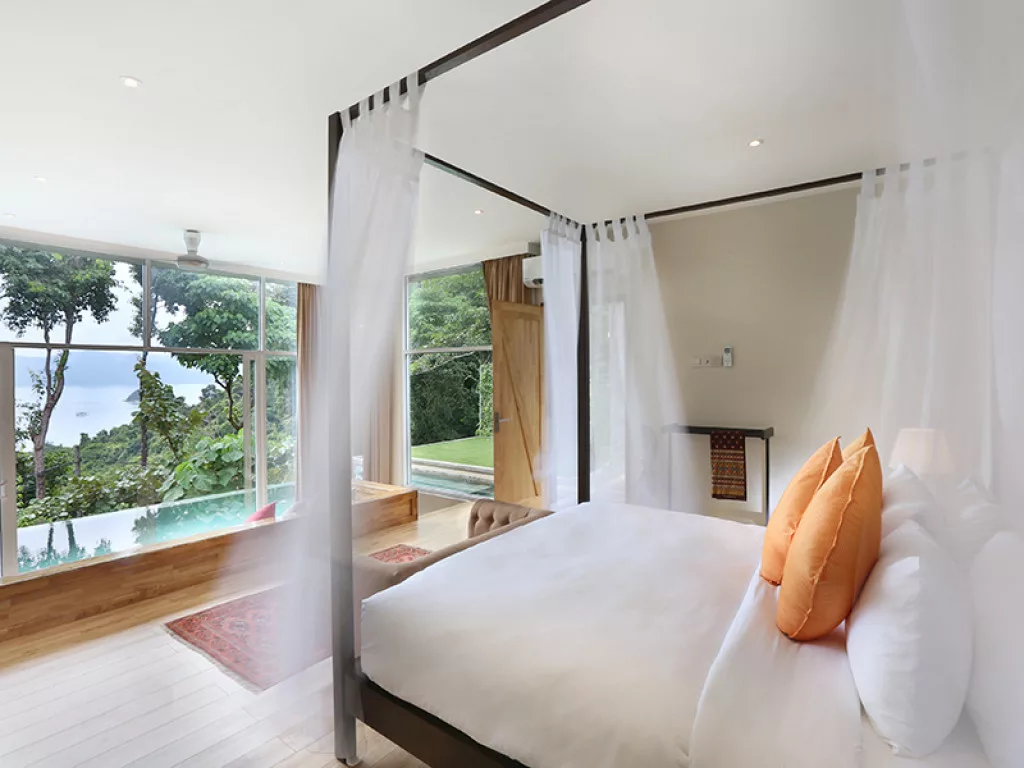
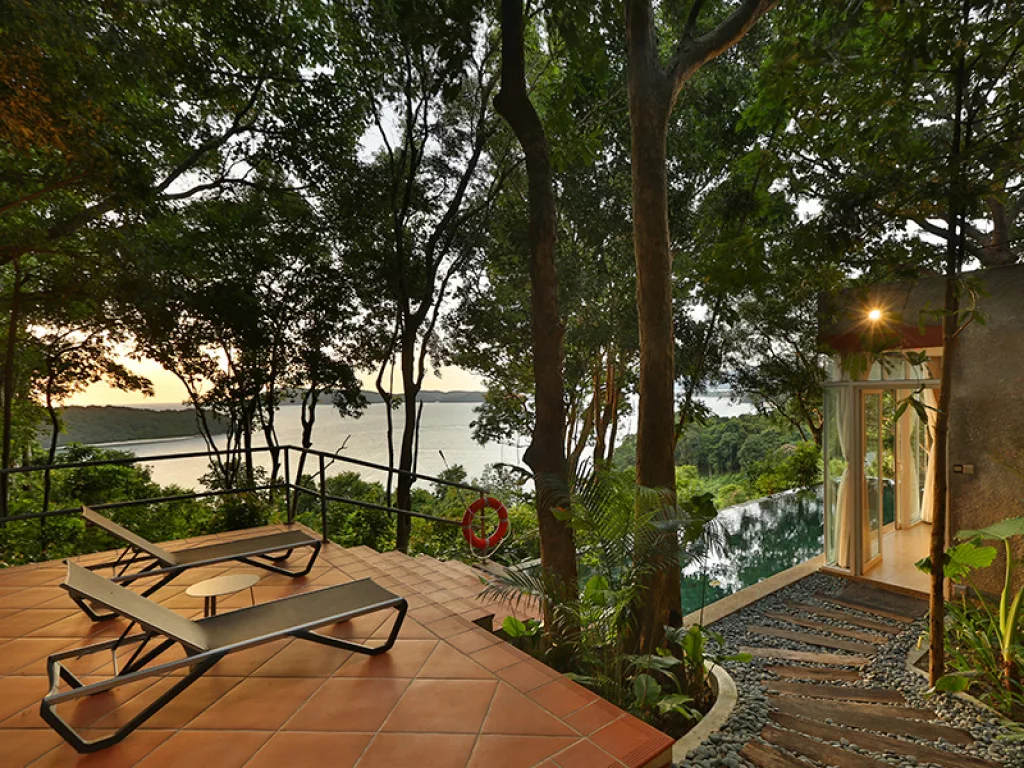
Taking the world’s steepest cable car to the glass-bottomed Sky Bridge is a spine-tingling way of appreciating Langkawi’s dramatic landscape. From a 410-foot-long pedestrian bridge curving across a deep chasm, at 2,170 feet above sea-level, there are astounding views over emerald valleys, the Langkawi archipelago and across to Thailand too.
Hidden in this steep, rocky terrain, are Ambong Pool Villas. The villas take their name from the delicate white-flowered Ambong-Ambong plants whose roots bind together the sand of Langkawi’s tropical paradise beaches. Also, from the fact that each villa has its own infinity pool. Beyond the rainforest, the view from those pools takes in the other 98 islands that make up the Langkawi archipelago. They are green pearls dotted through the Andaman Sea, that lies to the west of mainland Malaysia and just below the southern tip of Thailand. At low tide, some claim that there are 104 islands, whilst others add in two man-made islands to bring the total to 106.
With such views and such diverse wildlife, it is hard to escape the lure of an Ambong Pool Villas’ daybed. Hanging in the wardrobe, sarongs, and easy fitting fisherman’s trousers, symbolically invite guests to forget their pressured first world lives and to relax into the Langkawi lifestyle. There are options to have breakfast served on your terrace and dinner cooked there, by a private chef, too.
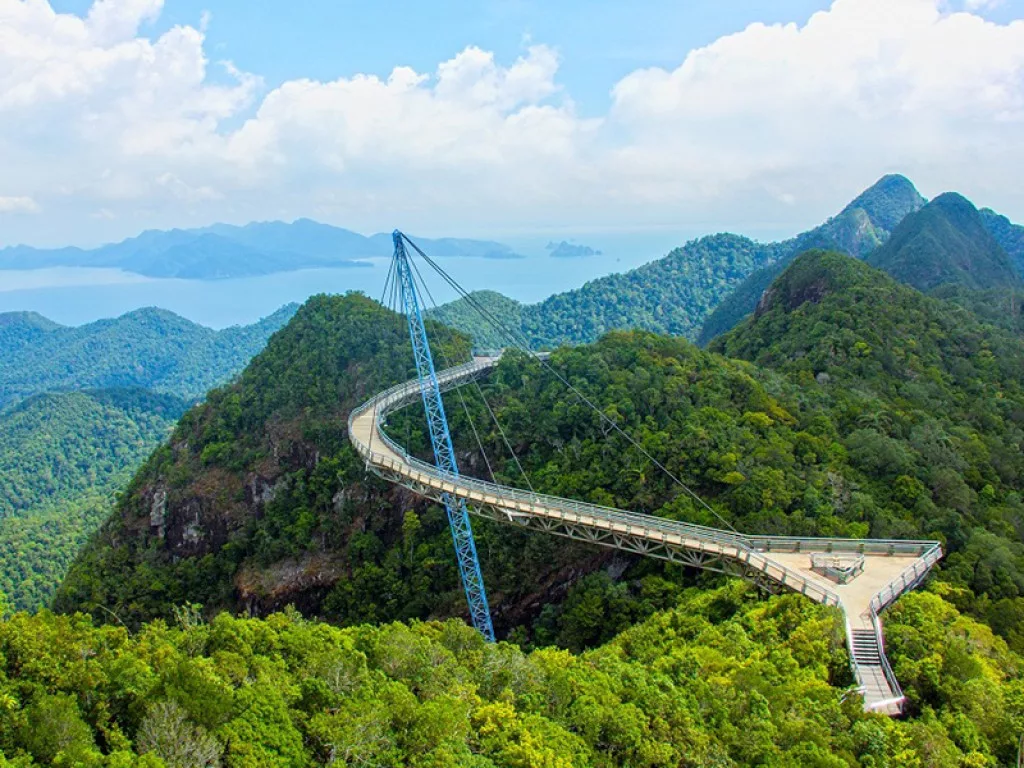
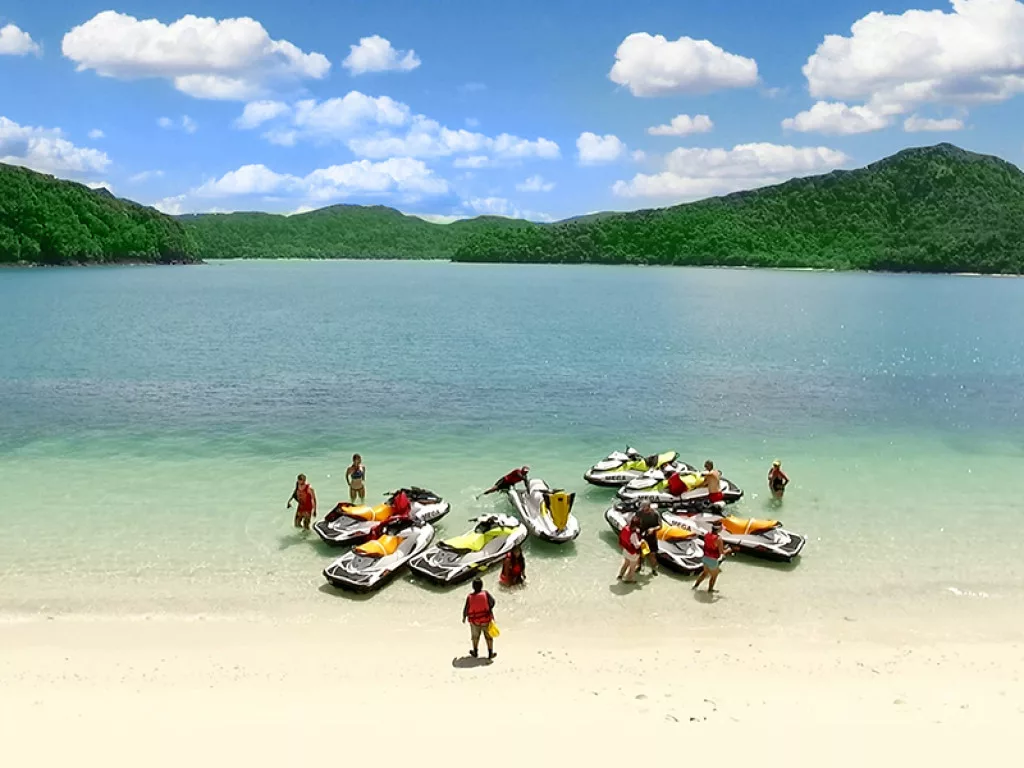
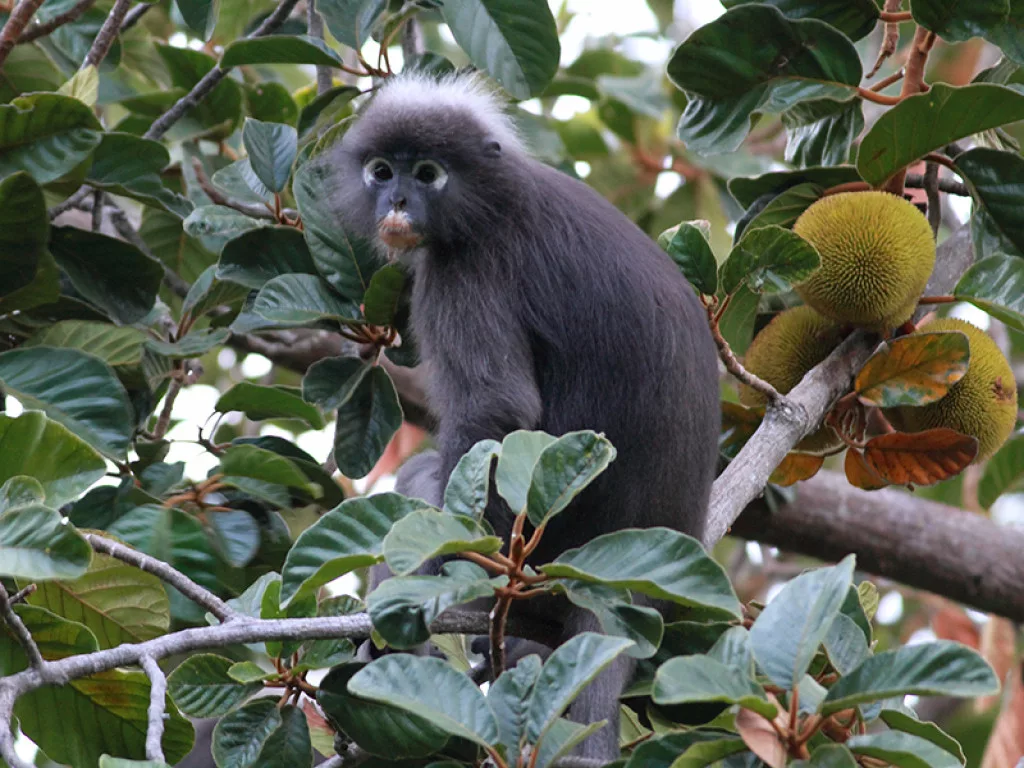
Guests are lulled by the almost hypnotic percussive soundtrack of the rainforest: the humming incessant cicadas chorus, the “gecko, gecko” call of the tree lizards and the melodious song of the rarely sighted but frequently heard Puff Throated Babbler
There is always the temptation to linger another hour or two to catch a rare glimpse of the slow loris or the even scarcer civet cats. Days in the rainforest make slow travel look hectic. In this resort every room is a quiet room. Here you wait and, possibly, maybe, the world of the rainforest may come to you.
Brash, bold and numerous, the macaque monkeys are the local bad boys. Villa fridges are padlocked to prevent them helping themselves to a beer. Taking an eco-friendly softly, softly approach, cleaners move round life-size soft toy tigers and alligators to discourage the long-tailed miscreants from their food raids on the villas’ kitchens. In contrast, the dusky leaf monkeys with their innocent gaze through seemingly white-rimmed spectacled eyes are timid and lovable. In the mid-afternoon heat, giant squirrels are easy to spot, languidly snoozing, draped around a shady branch. This is a place for an entire David Attenborough wildlife series.
Above, you occasionally hear the heavy flapping of a hornbill’s wings, a giant bird that looks like a survivor from a prehistoric era, as it searches for a sturdy branch to land on. Three species of hornbills can be spotted: the Great Hornbill, the Wreathed Hornbill and the Oriental Pied Hornbill. As their numbers are declining, nesting boxes have been nailed into the trees to encourage breeding.
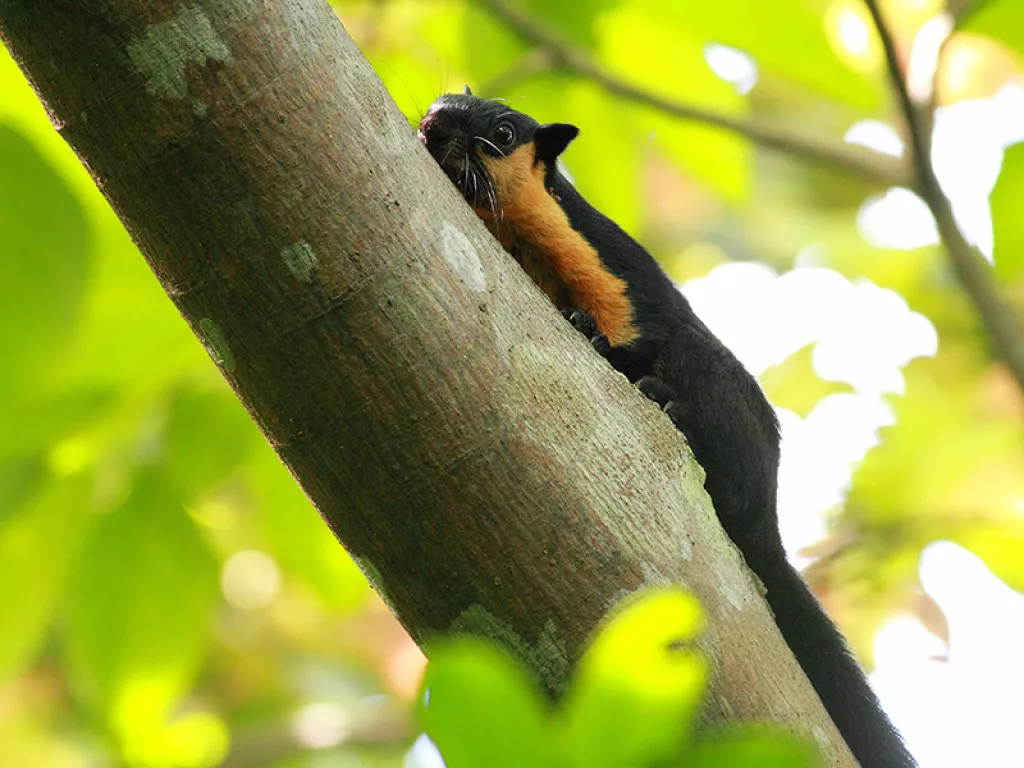
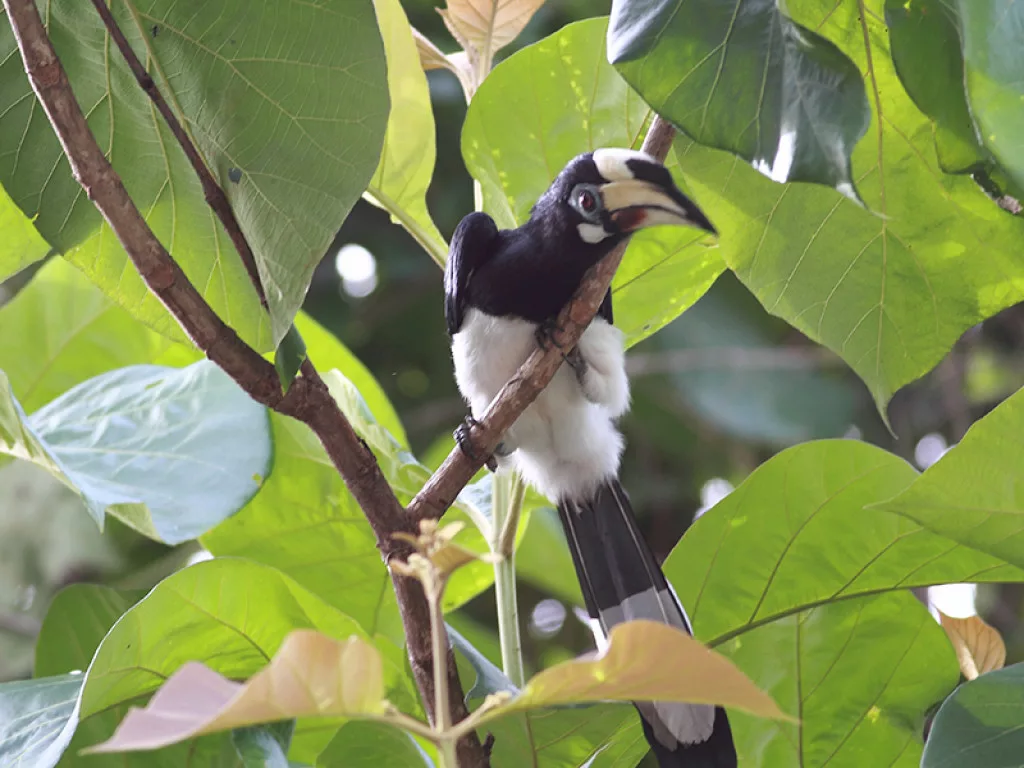
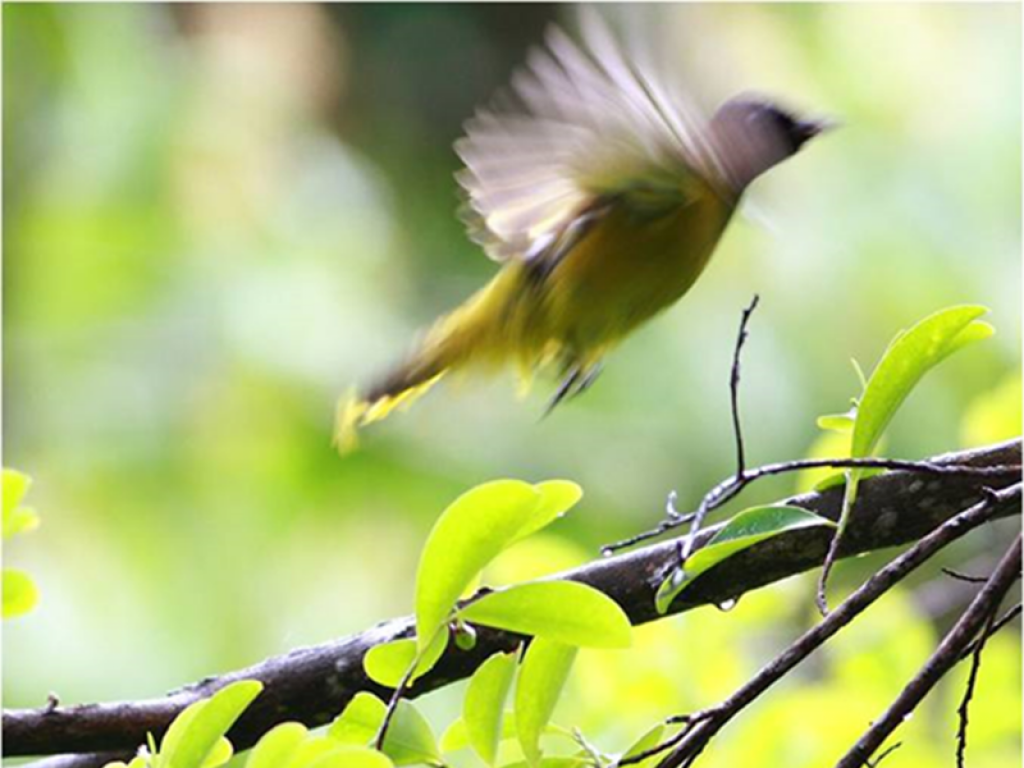
Altogether, there are more than 30 species of bird that can, with binoculars and patience, be spotted in the rain forest. Racket tailed drongos, who mimic the sound of other birds, and black-naped oriels are briefly sighted as they flash through the dense foliage.
Constructed on biophilic principles, the nine Ambong Pool villas merge seamlessly into the environment. Designed to preserve the beauty of the rainforest, the villas reflect traditional Malaysian architecture: featuring open-style living in large high-ceiling airy rooms. One villa is even built around a centuries old-tree which is protected by a glass-well.
Recycled railway sleepers form the steps to each of the villas. They are a reminder of the days when Malaysia, then Malaya, was part of the British empire and railways were created to transport the rubber. Immediately, the entrance to every villa gives a stunning view through the rainforest and across the infinite blues of the Andaman Sea. Every villa either has a sunrise view east towards Teluk Baru or west towards Pulau Tepor for sunsets.
Throughout the villas, with their contemporary tropical chic look, crisp cream bedding contrasting with dark wood furnishings, there is innovative recycling and a creative use of sustainable resources. Frames for the daybeds are made from rubber trees that are no longer cropped. A cottage industry creates blinds from Bertram palms that are sustainably grown, aquatic grasses are woven into laundry bins and cocktails are frequently served in coconut shells. Rainwater is carefully harvested. Any food waste from the Rimba Restaurant is used to feed Black Soldier flies. The nutrient-rich larvae then become a natural feed for fish and fowl.
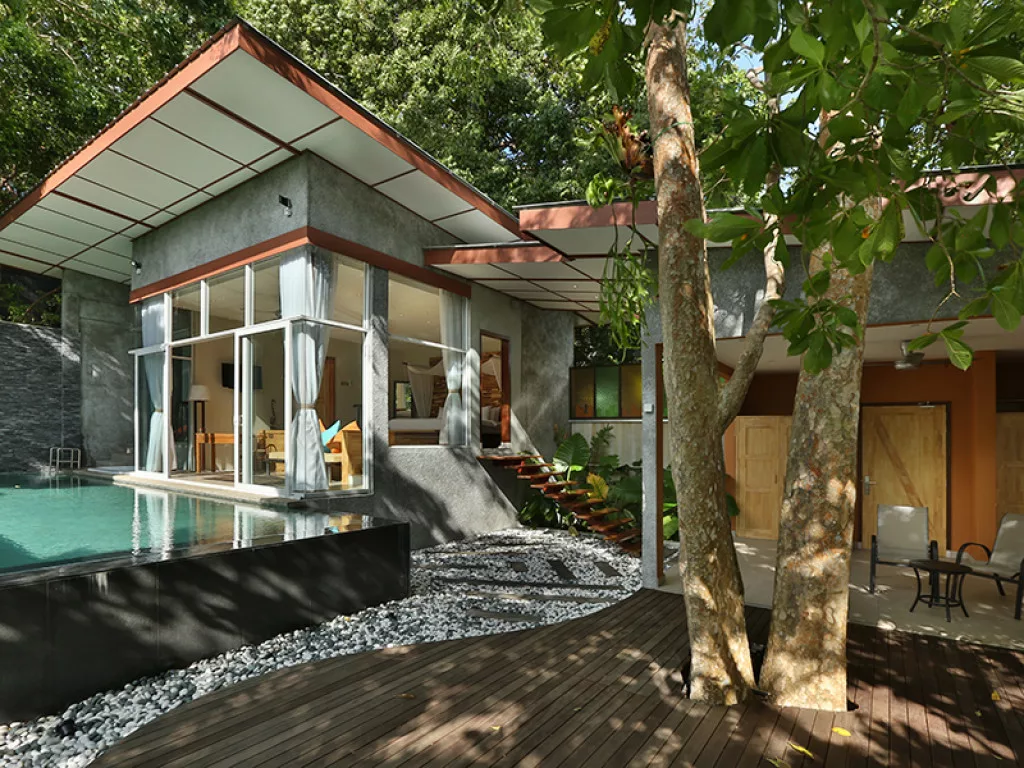
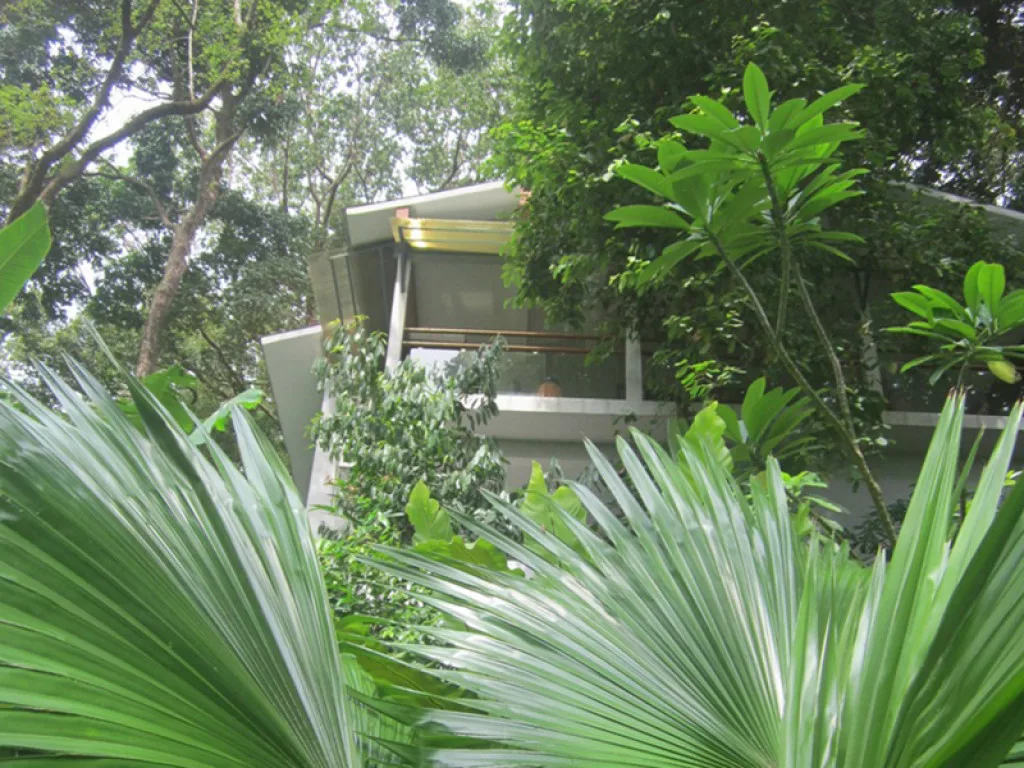
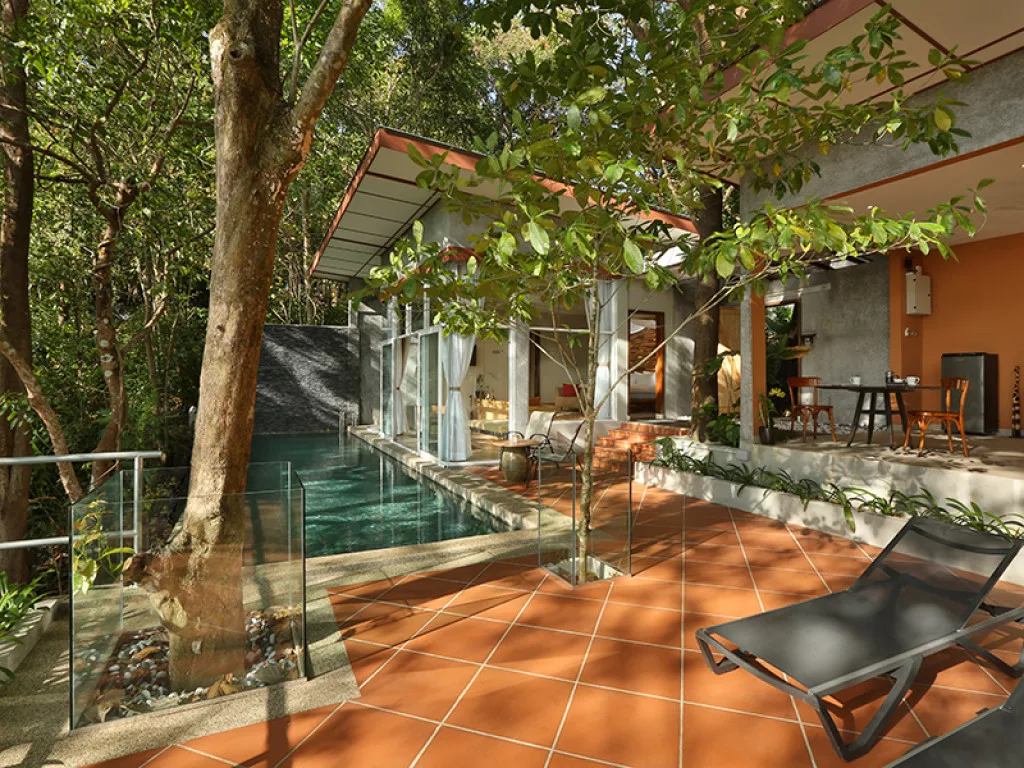
Windows as walls. Large glass doors opening onto decking. Both bring light and the forest into the villas. Forest breezes also reduce the need for energy consuming air-conditioning. Such is the seclusion and privacy of each villa, that there are external baths and showers as well as internal bathrooms. It is hard to tell where each villa ends and the forest begins.
For the Ahmed family, Ambong Pool Villas, was a longstanding dream. Brothers Adam and Amran had fond memories of childhood holidays on Langkawi, when the local fisherman used to take them out to sea for the day.
First at Bristol University and then during 12 long years working in high-rise Kuala Lumpur on finance, Amran dreamed of a return to Langkawi, enabling guests to enjoy luxury with minimal impact on the forest. Now his mother and father scour local markets for furniture and antiques to upscale and reuse in the villas. Currently, they are busy as there are plans for 13 even more luxurious villas to furnish. Some of these villas will be available for purchase, with owners having an option of Ambong-Ambong managing the villa, when not in-residence. Owners’ privileges include full use of the resort facilities and services.
The rainforest runs through every object, every action at Ambong Pool Villas. Herbs and spices are grown in the kitchen garden for both the Rimba Restaurant and the cookery courses. In the Ishan Spa, the therapeutic properties of local herbs, spices, fruit and flowers such as coconut, black rice, cinnamon, ginger and frangipani are used alongside traditional Malaysian massage techniques, including a bamboo massage.
A high-speed, high-adrenaline way of seeing the rainforest are the ziplines at nearby Umgawa Legendary Adventures. Undoubtedly, the highlight of the 12 ziplines, the longest of which extends over 200 metres, is the best view on the island of the Seven Wells Waterfalls.
Subterranean Langkawi is equally fascinating. Mangrove cruises stop off to explore some of the vast labyrinth of caves that lie beneath the rainforest. In an eerie limestone cathedral of stalactites and stalagmites, bats consume around 400 mosquitoes per hour to survive. Rainwater continually erodes the limestone, causing a cave to collapse after around 2 million years of existence. Then the process begins again.
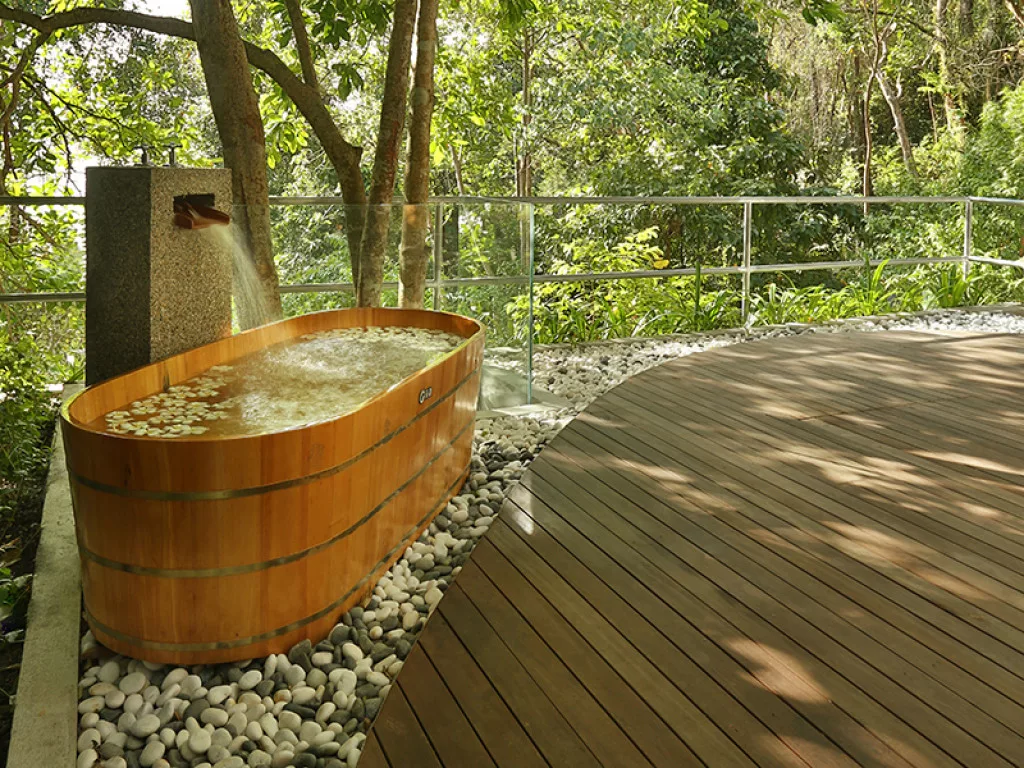
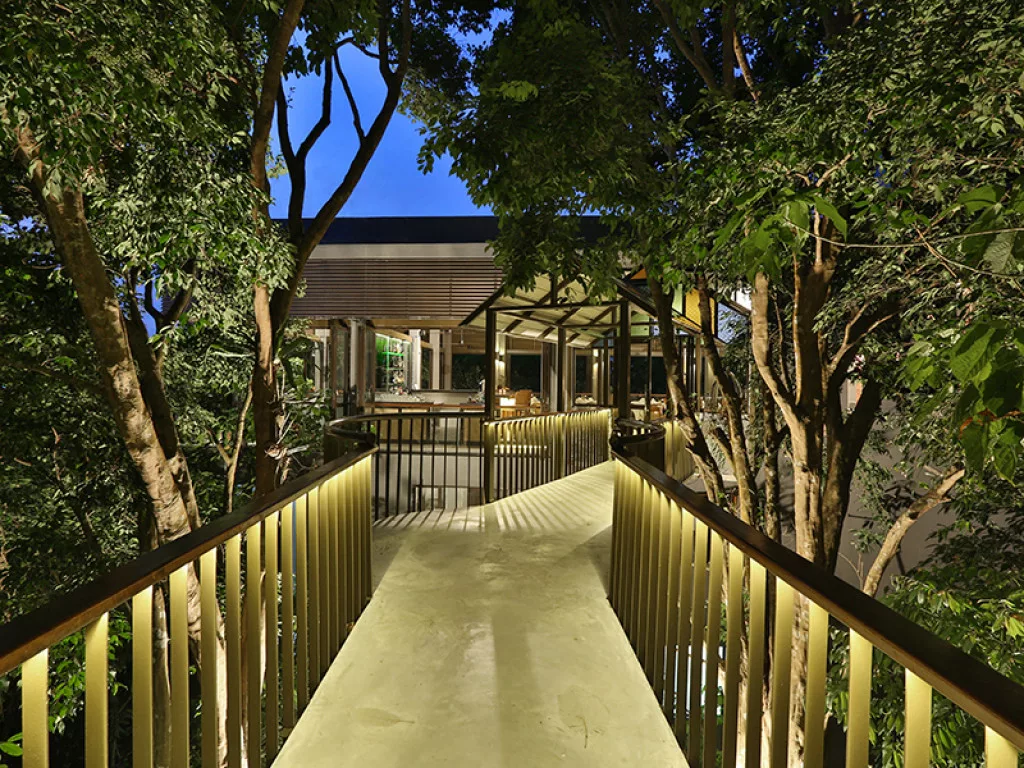
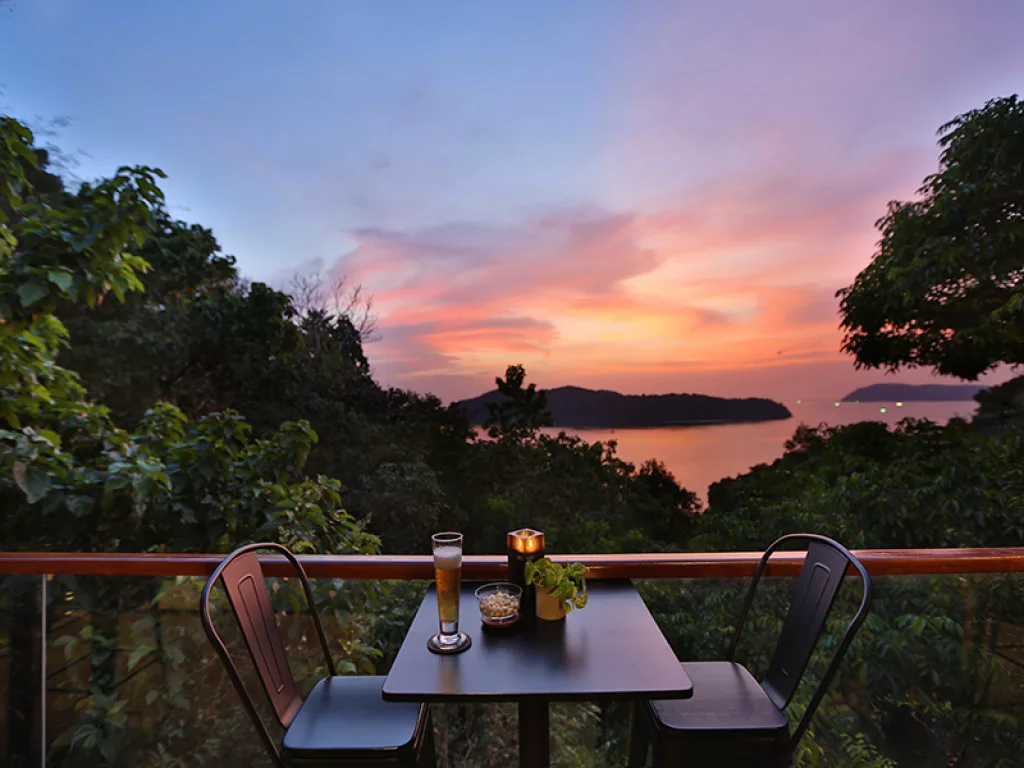
Langkawi’s four marinas give plenty of access to cruise the Andaman Sea, watching white-bellied sea-eagles diving for fish. Sunset dinner cruises, with stops to swim in the warm waters, are popular too.
Taking a half-day jet-ski safari with Mega Watersports, usually skimming over some 35 kilometres, is a thrilling way to explore the archipelago. Possibly mooring up on the island of Pulau Dayang Bunting which, because of the contours of its hills, translates as “The Isle of the Pregnant Maiden.” For women, swimming in the island’s spring water lake is said to boost fertility. Though it’s easy to laze on any one of the uninhabited Robinson Crusoe islands.
At times Langkawi may seem like a playboy’s paradise with the bars of Pantai Cenang, long sandy beaches, golf courses, yachts moored in the marinas and those jet-skis but this is merely a thin periphery. At Langkawi’s heart lies the rainforest, where, as night falls, porcupines emerge, mouse deer flit and the civet cats prowl, as they have for so many millennia.
FACT FILE
For the villas visit www.ambongpoolvillas.com
For the SkyBridge visit www.naturallylangkawi.my
For the rainforest zipline visit www.ziplinelangkawi.com
For tours exploring the limestone caves and river cruises visit www.langkawi-nature.com


